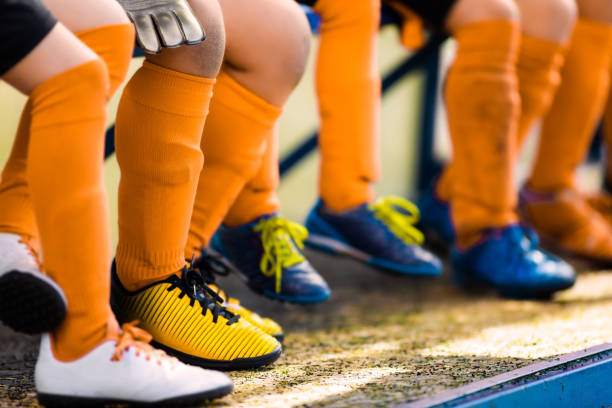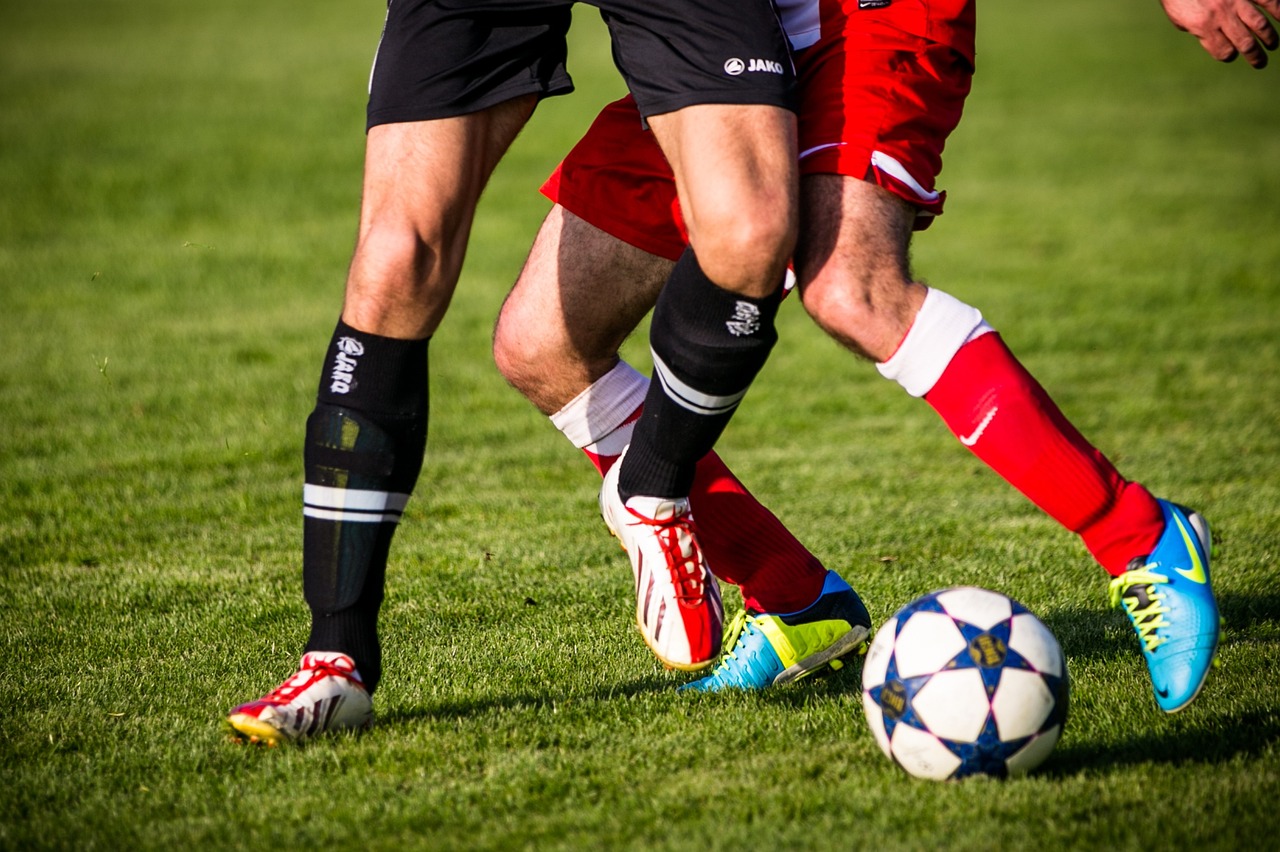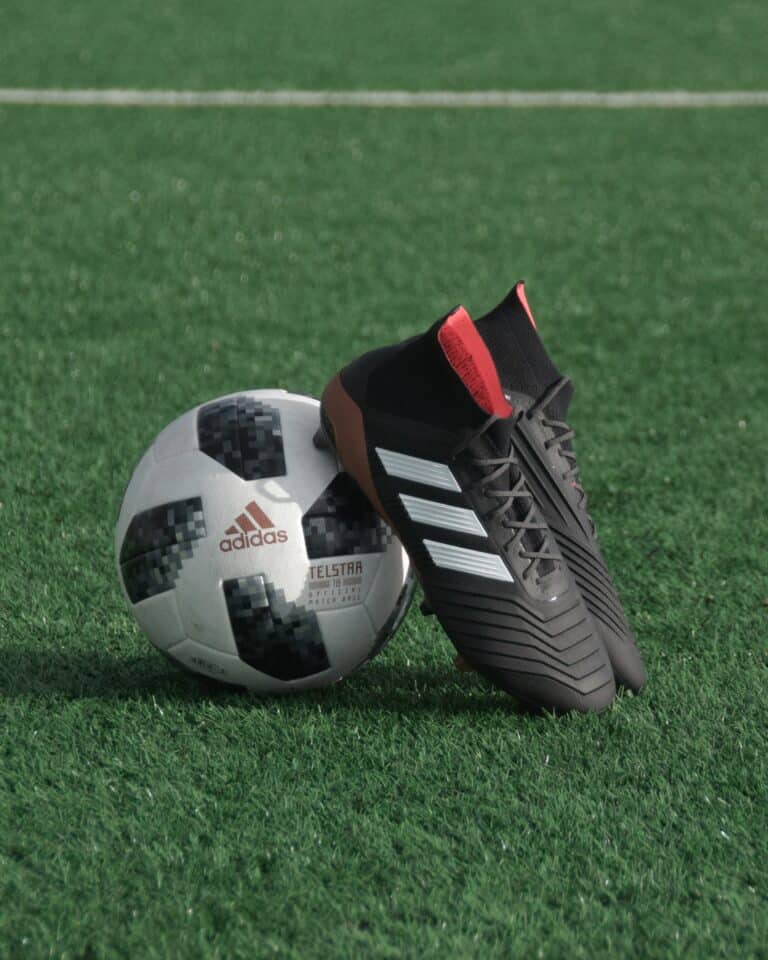How to Wear Soccer Shin Guards – A Full Guide
Soccer is a thrilling and difficult sport that calls for a blend of talent, speed, and stamina.
However, soccer can be physically exhausting and potentially dangerous, with players at risk of suffering injuries while playing, much like any contact sport.
This is why knowing how to wear soccer shin guards should be a non-negotiable thing for any player. This is because shin guards are an essential piece of gear that can boost players’ confidence and allow them to play with more aggression while minimizing the likelihood of lower leg injuries.

You’ve come to the perfect place if you’re new to soccer or just need a reminder about the proper way to put on shin guards.
Regardless of the type of shin guard you own, we’ll give you an easy-to-follow tutorial on how to wear soccer shin guards in this blog post.
Types of Soccer Shin Guards
There are several types of soccer shin guards available in the market, and each has its own pros and cons. The type of shin guard you choose depends on your personal preference, the level of protection you need, and the style of play you prefer. Before you learn how to wear soccer shin guards, you need to be well aware about the types of soccer shin guards available. Here are the most common types of soccer shin guards:
1. Slip-in Shin Guards
The simplest and most straightforward kind of shin protection are slip-ins. They are constructed of a thin material, like foam, and are engineered to slide into your socks easily.
These shin guards are simple to put on and ideal for new players or those who desire little protection.
However, they might not offer enough defense against forceful catches or bouncing balls.
2. Ankle Shin Guards
Players that require more protection for their ankles frequently choose for ankle shin guards, which offer additional protection for the ankles.
These shin guards often have a hard plastic shell that surrounds the shin and ankle and are bigger than slip-in shin guards. They have a strap that can be adjusted that holds the guard firmly in place for optimal protection.
3. Shin Guards with Straps
In terms of protection, shin guards with straps are comparable to ankle shin guards, but they also have additional straps that help keep the guard in place.
These straps are a popular option for seasoned players who desire a tailored fit because they can be adjusted to create a secure and comfortable fit.
The straps may be constructed from neoprene, Velcro, or elastic material.
4. Sock Shin Guards
Sock shin guards combine a sock with a slip-in shin guard to create a single item that offers both comfort and safety.
Since the shin guard is inserted inside the sock, no additional adjustment straps are required.
For players who like a sleek appearance, sock shin guards are pleasant to wear.
Choosing The Right Size
Choosing the perfect size for your soccer shin guards is one of the most crucial aspects of guaranteeing proper protection. In order to learn how to wear soccer shin guards, you will have to first choose the right size. Inadequately fitting shin guards may slide down or move during play, leaving your shins vulnerable to harm. Following are some guidelines for selecting the appropriate size for your soccer shin guards:
- Measuring Shin Length – Using a measuring tape, determine the length of your shin from the inside of your knee to the top of your ankle.The front of your shin, which will be covered by your shin guards, should be measured.
- Refer to the Chart Size – Consult the sizing chart provided by the shin guard manufacturer after you have your shin measurement. Based on the length of your shins, the size chart will show the proper shin guard size.
- Try on the Shin Guards – When you have the right size, test the shin guards on to make sure they fit comfortably. From just below the knee to the top of your ankle, the front of your shin should be entirely covered by the shin guard. It need to be snug without being excessively tight or loose.
- Test for Comfort and Range of Motion – By moving your legs like you would during play, you may assess the shin guards’ comfort and range of motion. Your movement should not be restricted or made uncomfortable by the shin guards, and they should remain in place as you walk.
- Consider the Style of Play – Finally, when selecting the appropriate size, take your preferred playing style into account. While players who play more finessefully may prefer a shorter or more lightweight shin guard for increased movement, players who play more aggressively may need longer or wider shin guards for best protection.
How to Wear Soccer Shin Guards (Slip-ins)
Slip-in shin guards are the easiest type of shin guards to wear, and they require minimal preparation. Here are the steps to follow in order to learn how to wear soccer shin guards (slip-ins):
- Put on your Socks – Put on your soccer socks first. Your entire shin should be covered by the socks, which should be pushed up to just below the knee.
- Insert the Shin Guards – Put your socks on first, then put the slip-in shin guards inside of them. The shin guard should be positioned such that it is centered on the front of your shin and extends all the way from the area just below the knee to the top of your ankle.
- Adjust for Comfort – If necessary, make the shin guard more comfortable to wear. While it shouldn’t be excessively tight or constricting, the shin guard should fit snugly against your shin. To maintain a comfortable fit, be sure to iron out any folds or creases in the socks.
- Pull on your Cleats: Put on your soccer cleats after putting on the shin guards. The cleats should be tied up tightly and should fit snugly but comfortably.
- Test for Comfort and Range of Motion – Finally, move your legs like you would during play to assess the comfort and range of motion of the slip-in shin guards. During play, the shin guards shouldn’t move or shift positions. They should also not cause any discomfort or impede your movement.
How to Wear Soccer Shin Guards With Straps
Shin guards with straps provide a more secure fit than slip-in shin guards, but they require a bit more preparation. Here are the steps to follow in order to learn how to wear soccer shin guards with straps:
- Put on your Socks – Put on your soccer socks first. Your entire shin should be covered by the socks, which should be pushed up to just below the knee.
- Insert the Shin Guards – Put your socks on first, then put the slip-in shin guards inside of them. The shin guard should be positioned such that it is centered on the front of your shin and extends all the way from the area just below the knee to the top of your ankle.
- Wrap the Straps Around Your Leg – The shin guard is fixed in place by wrapping the straps around your leg. The majority of shin guards with straps have two straps—one at the top and one at the bottom of the guard. In order to ensure a comfortable fit, fasten the straps firmly but not too tightly.
- Adjust the Straps – The straps should be adjusted as necessary to provide a secure fit. During play, the shin guard shouldn’t move or shift, but it also shouldn’t be too tight to limit your movement.
- Pull on your Cleats: Put on your soccer cleats after putting on the shin guards. The cleats should be tied up tightly and should fit snugly but comfortably.
- Test for Comfort and Range of Motion – Finally, move your legs like you would during play to assess the comfort and range of motion of the slip-in shin guards. During play, the shin guards shouldn’t move or shift positions. They should also not cause any discomfort or impede your movement.
As mentioned earlier, socks are an integral part of fitting our shin guards properly. Check our top recommendation for the best soccer socks available in the market right now!
If you want the best recommendations for soccer shin guards, check this out!







